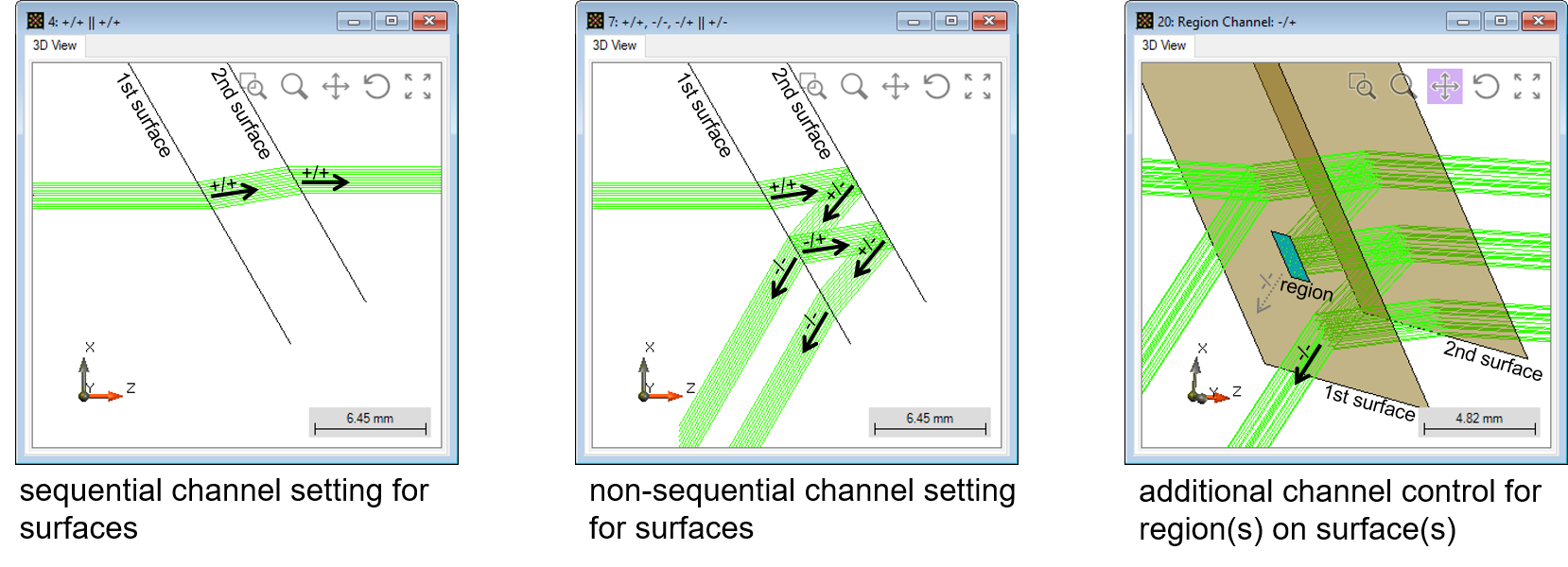Channel Settings for Non-Sequential Tracing
Abstract
VirtualLab Fusion enables flexible configuration of channels for surfaces and (grating) regions. By adjusting the channel configurations, one can realize desired modeling schemes easily.
We demonstrate the configuration of channels using an example of a lightguide with two surfaces. The resulting light paths generated by different combinations of settings are shown. Furthermore, we add grating regions on the light guide surfaces and demonstrate the configuration of channels for regions, as well as the grating parameters of such regions.
VirtualLab Fusion Configuration
-
 VirtualLab Fusion
VirtualLab Fusion
-
 Grating Package
Grating Package



